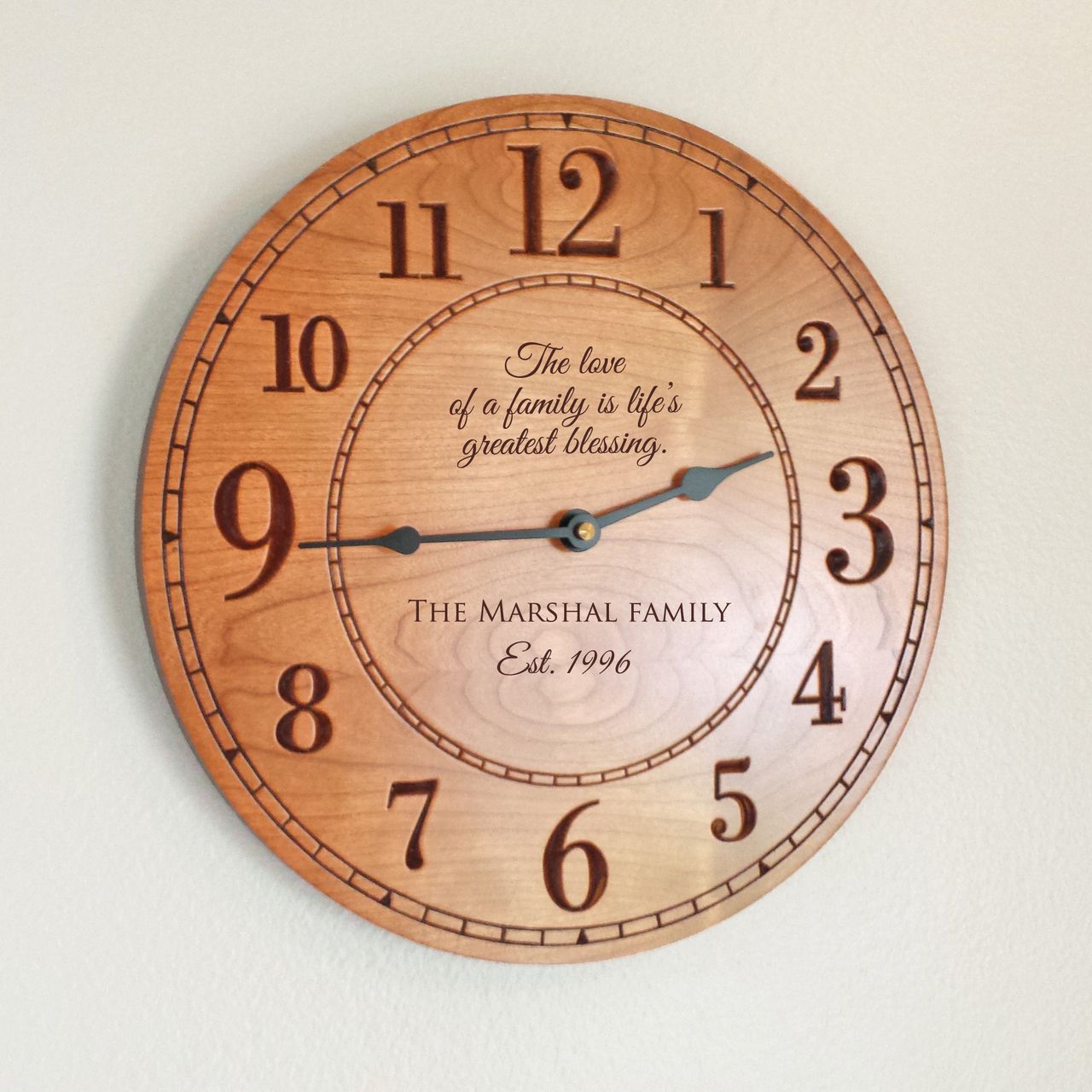It’s not just about what’s on the menu – your kitchen walls deserve attention too! A well-chosen kitchen wall clock not only keeps your culinary adventures on track but also adds a dash of personality to the heart of your home. From rustic charm to modern chic, the perfect clock awaits to elevate your kitchen’s style.
Choosing the Right Clock for Your Kitchen
Ready to find the perfect timepiece for your culinary haven? Let’s break down the essentials:
1. Define Your Kitchen’s Style
- Modern: Sleek metal finishes, minimalist designs, and bold colors reign supreme.
- Farmhouse: Think rustic wood, vintage-inspired designs, and a warm, inviting aesthetic.
- Industrial: Embrace metal accents, distressed finishes, and a utilitarian vibe.
Explore our exquisite collection of kitchen clocks to discover a range of designs that complement every style.
2. Size and Placement: Striking the Perfect Balance
Before you fall for a stunning clock, consider your kitchen’s proportions:
- Small Kitchens: Opt for a smaller clock (around 8.5 inches) to avoid overwhelming the space.
- Larger Kitchens: You have more flexibility to go bolder with a statement piece (24 inches or more).
Strategic Placement:
- Above the stove: Convenient for keeping an eye on cooking times.
- Over the sink: Adds a touch of style while you’re doing dishes.
- In the dining area: Creates a focal point and enhances the ambiance.
3. Materials and Features: Adding Character and Functionality
Beyond aesthetics, consider materials and features that align with your lifestyle:
- Wood: Infuses warmth and a rustic touch.
- Metal: Exudes a modern, industrial feel.
- Glass: Introduces an airy and elegant element.
Functional Features:
- Silent Movement: Ideal for those who value peace and quiet.
- Large Numerals: Ensure easy readability, even from a distance.
- Unique Shapes and Designs: Express your personality and add a touch of whimsy.
4. Modern Clocks with a Twist
Today’s kitchen clocks offer more than just timekeeping:
- Smart Home Integration: Connect your clock to other devices for enhanced convenience.
- Voice Control: Adjust the time or set timers with ease.
- Pendulum Clocks: Introduce a touch of vintage charm and nostalgia.
5. Style on a Budget
Creating a stylish kitchen doesn’t have to break the bank:
- Value-Oriented Brands: Look for reputable brands known for their quality and affordability.
- DIY Projects: Upcycle an old clock or craft a unique piece using reclaimed wood.
6. Make It Personal: Customized Kitchen Clocks
Add a unique touch to your kitchen with a personalized clock:
- Monograms: Display your initials or family name.
- Custom Designs: Incorporate favorite quotes, patterns, or images.
Is it Okay to Put a Wall Clock in the Kitchen?
Absolutely! A well-chosen kitchen wall clock is not merely functional but also serves as a stylish design element that enhances the heart of your home.
Here’s why:
- Convenience: Easily keep track of time while cooking, baking, or socializing, freeing yourself from constantly checking your phone.
- Style: A wide array of styles, from vintage to modern, ensures you’ll find the perfect clock to complement your kitchen’s aesthetic.
- Focal Point: A striking kitchen clock can serve as a captivating focal point, drawing the eye and adding visual interest.
Finding the Perfect Spot:
- Above shelves or cabinets: Ensures clear visibility.
- Near doorways: Allows for quick time checks as you enter or exit the kitchen.
- On the wall above your primary countertop workspace: Conveniently placed for multi-tasking while preparing meals.
Beyond Telling Time:
- Statement Pieces: Large, uniquely designed clocks can become works of art that elevate your décor.
- Conversation Starters: Vintage or themed clocks often spark conversations and add character to your kitchen.
How Big Should a Kitchen Wall Clock Be?
Choosing the right size is crucial – too small, and it gets lost; too large, and it overpowers the room.
Here’s a guide:
- 12-24 Inches: Often the sweet spot for average-sized kitchens, offering a good balance of visibility and proportion.
- 8.5 Inches: Suitable for smaller kitchens, compact spaces, or as accent pieces alongside other décor.
- 24-32 Inches (or larger): Ideal for expansive kitchens, open floor plans, or making a bold statement.
Factors to Consider:
- Room size: A larger kitchen can accommodate a larger clock, while a smaller one requires a more proportional timepiece.
- Available wall space: Don’t overcrowd the wall.
- Viewing distance: Ensure the clock is easily readable from various points in the kitchen.
- Clock style: A minimalist clock can handle a larger size, while an ornate design might be better suited to a smaller scale.
Which Direction Should a Kitchen Wall Clock Be?
While primarily a matter of personal preference, some believe the direction of a kitchen wall clock can influence the energy of the space, drawing upon principles of Vastu Shastra:
- North: Often associated with wealth and prosperity. Placing a clock on the north wall is thought to attract abundance.
- East and Northeast: Considered auspicious directions that represent positive energy, new beginnings, and well-being.
Directions to potentially avoid, according to Vastu:
- South: May bring negative energy or financial challenges (according to some Vastu practitioners).
Beyond Direction:
- Height: Hang the clock at a height that allows for easy viewing and complements the surrounding décor. Some suggest aligning it with the top of the kitchen door for optimal energy flow.
- Avoid placement opposite the main entrance: This is believed to disrupt positive energy flow.
- Color: Opt for soothing and auspicious colors like white, green, or blue.
Remember: While these Vastu suggestions offer intriguing possibilities, there’s no scientific evidence to support them. Ultimately, the best direction for your kitchen wall clock is the one that feels right for you and complements your kitchen’s design.
- How to Get Mothball Smell Out of Clothes: A Complete Guide - April 25, 2025
- How to Get Highlighter Out of Clothes: Easy & Effective Stain Removal Guide - April 25, 2025
- How to Get Dry Erase Marker Out of Clothes - April 25, 2025










